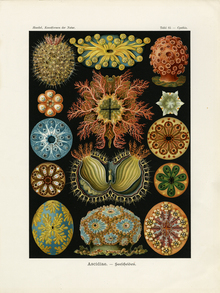Browse by category
- Subject
- Abstract
- Africa
- Amputation
- Anatomy
- Animal
- Animals
- Art nouveau
- Baby
- Beast
- Beasts
- Biology
- Birds
- Blood circulation
- Body
- Botany
- Breasts
- Cataract
- Chemistry
- Colourful
- Colours
- Corpse
- Dentistry
- Dermatology
- Disease
- Diseases
- Dissection
- Epilepsy
- Evolution
- Expressions
- Eye
- Eye diseases
- Eyes
- Faces
- Fashion
- Female breast
- Fishes
- Flowers
- Fly
- Frog
- Fruit
- Fundus
- Graphic
- Head
- Hearing organs
- Herbal
- Hermaphrodite
- Histology
- Human body
- Hysteria
- Impressionism
- Injured soldier
- Injuries
- Insane
- Insect
- Insects
- Lithotomy
- Lymphatic vessels
- Magic
- Marine organisms
- Medical examination
- Medical plants
- Medicine
- Microscopy
- Middle ages
- Midwifery
- Monster
- Muscle manikin
- Museum
- Mushrooms
- Nerve cells
- Neurology
- Nipples
- Nobel prize
- North america
- Nuts
- Obstetrics
- Odontology
- Ophtalmology
- Ophtalmoscope
- Optics
- Organic
- Orthopedics
- Pancreas
- Pathology
- Patient
- Pharmacy
- Physician
- Physiognomy
- Physiology
- Physionomy
- Plants
- Poisoness
- Polyp
- Pop-up pictures
- Portraits
- Prothesis
- Psychiatry
- Psychology
- Renaissance
- Skeleton
- Skin diseases
- Surgery
- Swedish flora
- Tattoo
- Teeth
- Teratology
- Trees
- Us civil war
- Vaccination
- Vocal organs
- War
- Zoology
- Emotion
- Absurd
- Amazing
- Amusing
- Artistic
- Beautiful
- Charming
- Colourful
- Dramatic
- Elegant
- Fanciful
- Fantasy
- Fascinating
- Funny
- Horrid
- Humorous
- Indecent
- Instructive
- Interesting
- Marvellous
- Masterpiece
- Morbid
- Old-fashioned
- Painful
- Remarkable
- Scary
- Spectacular
- Strange
- Superb
- Surrealistic
- Unattractive
- Unique
+ Show all

Pancreas
-
Mémoire sur le pancréas et sur le role du suc pancréatique dans les phénomènes digestifs, particuliérement dans la digestion des matières grasses neutres.
Paris, J.-B. Baillière, 1856. - Show book - Author: BERNARD, Claude (1813–1878)
- First edition of Bernard’s definitive monograph which completely reviewed the results of his first major discovery – the function of the pancreatic juice in digestion – one of Bernard’s most important contributions to scientific medicine. It was first published in vol. 1 of Supplement aux Comptes Rendus, pp 379-563, of which the above is the very rare offprint with separate title-leaf and new pagination, printed in a very small edition. Claude Bernard is regarded as the most important contributor to experimental physiology in the nineteenth century. His ”contributions are so important and so numerous that it is difficult to select one work to represent them. His major physiological discoveries included the role of the pancreas in digestion, the glycogenic function of the liver, the vasomotor innovation, and the effects of curare on neuromuscular transmission. He also introduced seminal theoretical concepts, such as that of ”internal secretion,” and was the author of the landmark medico-philosophical work, Introduction à l’étude de la médecine expérimentale (1865), in which he analyzed the philosophical basis of the scientific method and its application to the study of living beings. . . . In 1846 Bernard began studying the panceratic juices and their role in digestion, and in 1849 he published a paper in which he described his discovery of the role of pancreatic juices in the first stage of metabolism, the emulsification of fats. By observing the processes of digestion in dogs and rabbits, and by experimentation with pure pancreatic juices collected from temporary panceratic fistulae, Bernard was able to show that pancreatic juices made fats absorbable by breaking them down into fatty acids and glycerine. In 1856 he published his most complete statement on the function of the pancreas” (Haskell F. Norman in One Hundred Books Famous in Medicine), a beautfully illustrated monograph, which is ”at once a model of scientific writing and a classic in the history of physiology.’ (Fulton). Plate 1-4 are drawn by Bernard, pl. 5-8 by Lackerbauer and pl 9 by Leveillé, all engraved by Borromée. Five of the plates are hand-coloured.





















